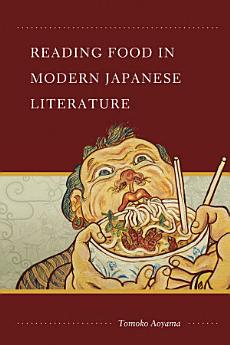Reading Food in Modern Japanese Literature
Tomoko Aoyama
Sep 2008 · University of Hawaii Press
Ebook
288
Pages
family_home
Eligible
info
reportRatings and reviews aren’t verified Learn More
About this ebook
Literature, like food, is, in Terry Eagleton’s words, "endlessly interpretable," and food, like literature, "looks like an object but is actually a relationship." So how much do we, and should we, read into the way food is represented in literature? Reading Food explores this and other questions in an unusual and fascinating tour of twentieth-century Japanese literature. Tomoko Aoyama analyzes a wide range of diverse writings that focus on food, eating, and cooking and considers how factors such as industrialization, urbanization, nationalism, and gender construction have affected people’s relationships to food, nature, and culture, and to each other. The examples she offers are taken from novels (shosetsu) and other literary texts and include well known writers (such as Tanizaki Jun’ichiro, Hayashi Fumiko, Okamoto Kanoko, Kaiko Takeshi, and Yoshimoto Banana) as well as those who are less widely known (Murai Gensai, Nagatsuka Takashi, Sumii Sue, and Numa Shozo).
Food is everywhere in Japanese literature, and early chapters illustrate historical changes and variations in the treatment of food and eating. Examples are drawn from Meiji literary diaries, children’s stories, peasant and proletarian literature, and women’s writing before and after World War II. The author then turns to the theme of cannibalism in serious and popular novels. Key issues include ethical questions about survival, colonization, and cultural identity. The quest for gastronomic gratification is a dominant theme in "gourmet novels." Like cannibalism, the gastronomic journey as a literary theme is deeply implicated with cultural identity. The final chapter deals specifically with contemporary novels by women, some of which celebrate the inclusiveness of eating (and writing), while others grapple with the fear of eating. Such dread or disgust can be seen as a warning against what the complacent "gourmet boom" of the 1980s and 1990s concealed: the dangers of a market economy, environmental destruction, and continuing gender biases.
Reading Food in Modern Japanese Literature will tempt any reader with an interest in food, literature, and culture. Moreover, it provides appetizing hints for further savoring, digesting, and incorporating textual food.
Food is everywhere in Japanese literature, and early chapters illustrate historical changes and variations in the treatment of food and eating. Examples are drawn from Meiji literary diaries, children’s stories, peasant and proletarian literature, and women’s writing before and after World War II. The author then turns to the theme of cannibalism in serious and popular novels. Key issues include ethical questions about survival, colonization, and cultural identity. The quest for gastronomic gratification is a dominant theme in "gourmet novels." Like cannibalism, the gastronomic journey as a literary theme is deeply implicated with cultural identity. The final chapter deals specifically with contemporary novels by women, some of which celebrate the inclusiveness of eating (and writing), while others grapple with the fear of eating. Such dread or disgust can be seen as a warning against what the complacent "gourmet boom" of the 1980s and 1990s concealed: the dangers of a market economy, environmental destruction, and continuing gender biases.
Reading Food in Modern Japanese Literature will tempt any reader with an interest in food, literature, and culture. Moreover, it provides appetizing hints for further savoring, digesting, and incorporating textual food.
Rate this ebook
Tell us what you think.
Reading information
Smartphones and tablets
Install the Google Play Books app for Android and iPad/iPhone. It syncs automatically with your account and allows you to read online or offline wherever you are.
Laptops and computers
You can listen to audiobooks purchased on Google Play using your computer's web browser.
eReaders and other devices
To read on e-ink devices like Kobo eReaders, you'll need to download a file and transfer it to your device. Follow the detailed Help Center instructions to transfer the files to supported eReaders.






